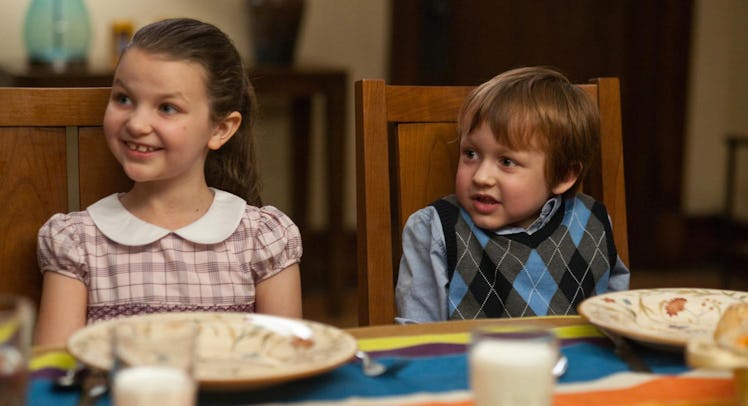It’s Time to Gamify the Family Dinner
Cajoling a child into eating is a pain in the ass. Skip it and just throw a dinner party instead. Everything will work out.

After the relative peace of the high chair years, family dinner devolves into a series of skirmishes. The kid’s objective is singular: Get the hell away from the dinner table at all costs because it’s a boring place with boring people. Parents, speaking in broad generalizations, are reluctant to agree to those terms or even grant the premise. Unpleasantness ensues–avoidable unpleasantness. In truth, there is an easy way to cultivate mutual accord: Make dinner fun. Just play some games and a fight turns into a celebration.
Lynn Barendsen, executive director of The Family Dinner Project at the Harvard Graduate School of Education can rattle off a laundry list of improved outcomes from decreased drug use to increased vocabulary for children who eat with their parents. There is no developmental panacea, but if there was, it would be that. Barendsen says all the potential benefits lead back to the same place.
“It all points to bonding,” she says. “It points to enjoying each other’s company and really experiencing the pleasure of being a family.”
But pleasure is often far from a parent’s mind during dinner, which belligerent children can turn into a Sisyphean exercise in vegetable-pushing. Focussing on that difficulty–rather than fun–is tempting because it feels like the right thing to do. Happily, it isn’t. Most nutritionists are quick to point out that parents can only create a good, balanced meal. Eating it or not is up to the kid. If they don’t, they don’t.
Naturally, kids that aren’t occupied leave faster and eat less. That’s why Barendsen encourages parents to come to the table equipped with games and conversation starters. “The food may bring people to the table, but the conversation and the fun will keep them there,” she says. She is, essentially, talking about how to throw a dinner party.
And, like dinner party guest, most kids just want to be heard. If you give them a chance to play, talk, and even be silly, they’ll likely jump at the chance. The easiest way to do that, given that they’re not going to bring up office gossip or talk politics, is to get weird. Barendsen’s favorite game is “Three Things,” in which family members take turns naming three things that have a common attribute, like a color or a texture or a biological taxonomy. “You can even get a little deeper,” Barendsen says. “You can ask, ‘Name three things that scare you?’”
Gleaning that kind of deep knowledge about kids can go further with a conversation starter called Roses and Thorns. Another turn-taking game, kids and parents present one thing that was positive about their day and one thing that was negative.
“Sometimes we’ll add a bud,” says Barendsen. “That’s presenting a new idea or something we thought of during the day.”
To create longer engagement, parents can build a cooperative story with their kids. The story begins with a “Once upon a time,” and the introduction of a character with a problem to solve. A squirrel allergic to nuts, say, or a king with an approval rating in the toilet. The story is then handed to the next person, who adds to it, and loops around the table, person to person until someone gets to “The End.”
But a story isn’t necessarily a conversation. So Barendsen recommends getting started with something really accessible like asking what super power everyone at the table would like to have. The point is that it doesn’t have to be deep, but even the silly can be illuminating.
In the end, the important part is to remember that none of this needs to look anything like parents probably think it does. Nobody has to be fully dressed. Napkins can be optional. The plates don’t need to be porcelain. The food doesn’t even have to be that healthy.
“When families feel like there’s so much pressure on them to have the perfect meal and bond, that can be very intimidating,” Barendsen explains. “Especially for families that aren’t managing to get to the table at all…. Sometimes the ‘good enough’ dinner, really is good enough.”
This article was originally published on